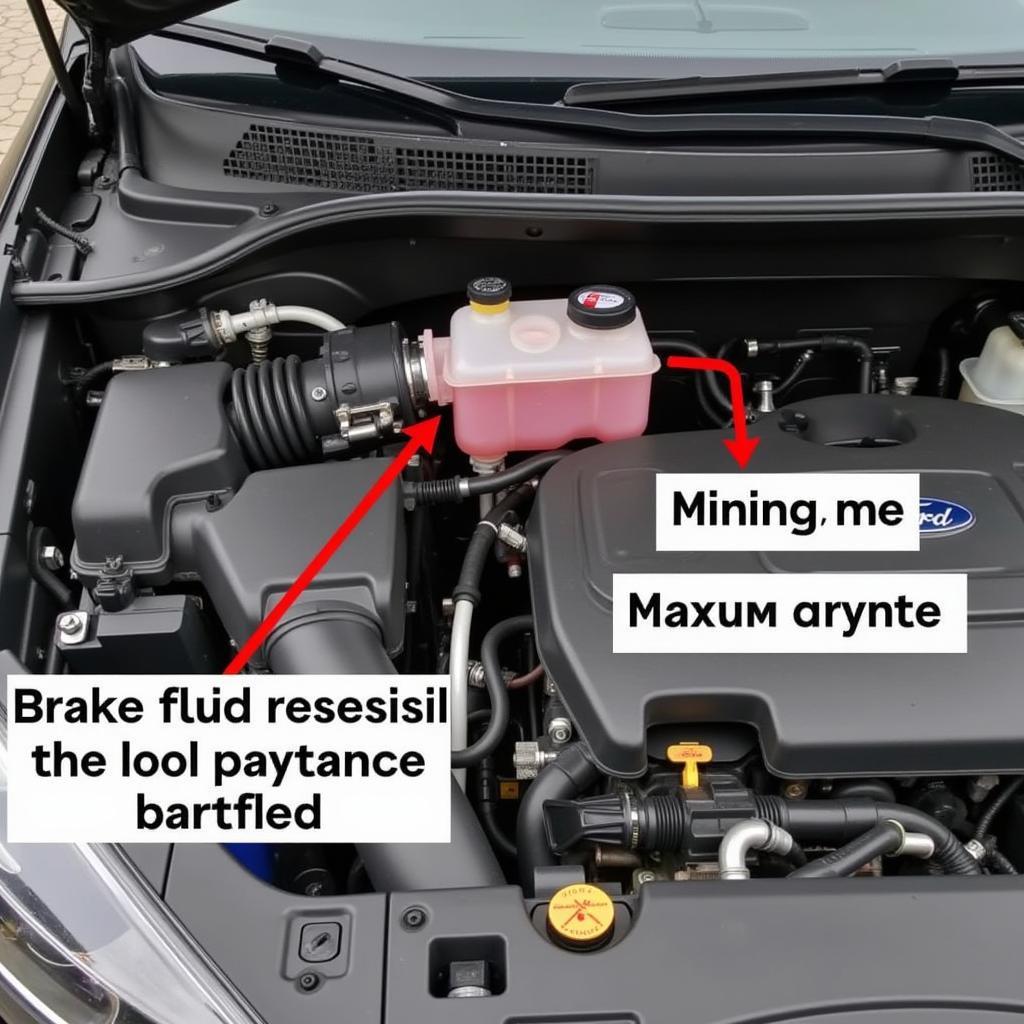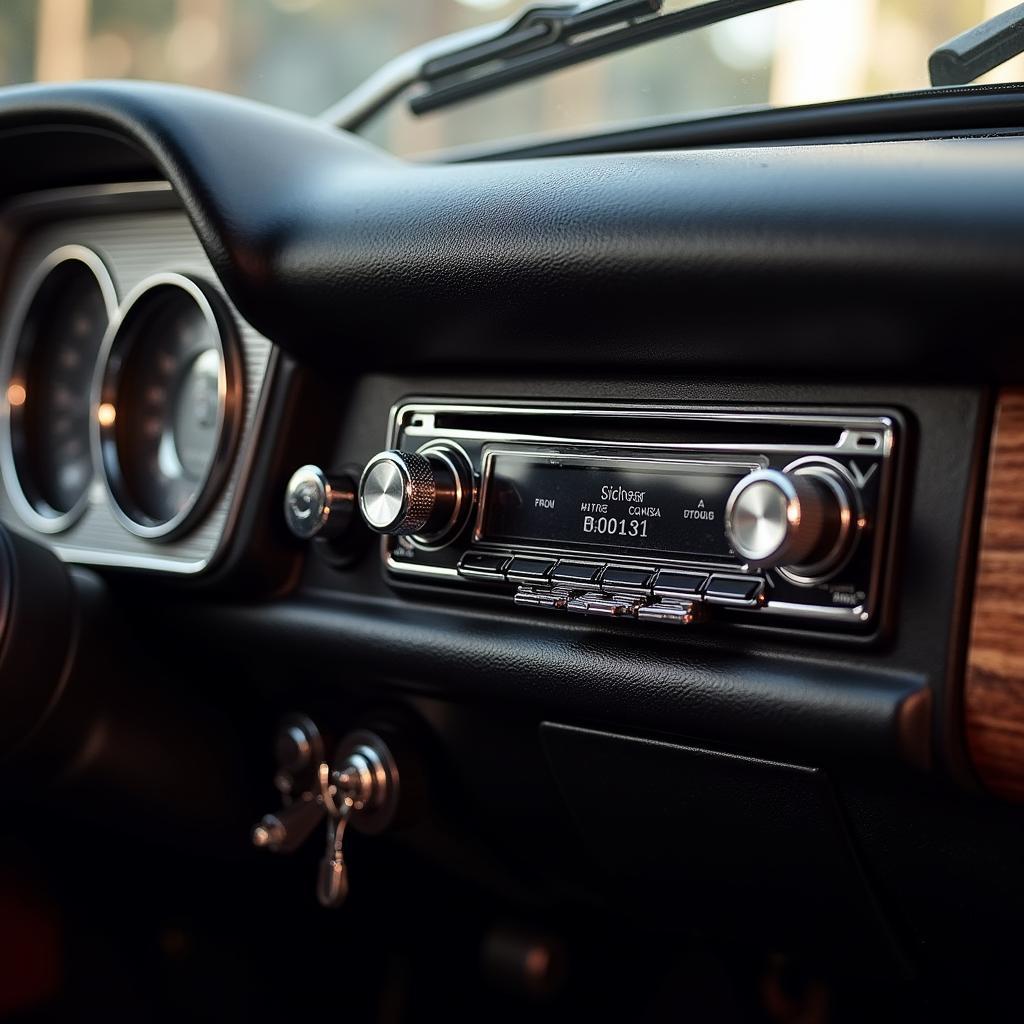The dreaded “Check Brake System” warning light on your Ford dashboard can be a nerve-wracking experience. It’s a clear signal that something isn’t right with your braking system, and ignoring it could put you and others at risk. This comprehensive guide will walk you through the common causes of a Ford check brake system warning light, how to troubleshoot the issue, and potential solutions to get you back on the road safely.
Understanding Your Ford’s Brake System Warning Light
The “Check Brake System” warning light, often accompanied by a message on your dashboard display, is your Ford’s way of telling you there’s a problem with the braking system. Unlike the regular brake warning light that primarily indicates low brake fluid, the “Check Brake System” light can point to a wider range of issues, from minor sensor glitches to more serious problems requiring immediate attention.
Common Causes of a Ford Check Brake System Warning Light
Here are some of the most common culprits behind a Ford check brake system warning light:
- Low Brake Fluid: This is the most common reason for the warning light. Low brake fluid can indicate a leak in the braking system, which needs to be addressed immediately.
- Worn Brake Pads: Brake pads naturally wear down over time. When they get too thin, a sensor will trigger the warning light.
- Faulty Brake Light Switch: The brake light switch activates your brake lights when you press the brake pedal. If it malfunctions, it can also trigger the check brake system warning.
- ABS Sensor Issues: Your Ford’s Anti-lock Braking System (ABS) relies on sensors to function correctly. A dirty, damaged, or faulty ABS sensor can trigger the warning light.
- Hydraulic System Problems: Issues within the hydraulic system, such as air in the lines or a faulty master cylinder, can also illuminate the warning light.
- Electronic Parking Brake Fault: Many modern Fords have electronic parking brakes. A malfunction within this system can also trigger the warning.
Troubleshooting a Ford Check Brake System Warning Light
Before heading to a mechanic, you can perform some basic checks:
-
Check Your Brake Fluid Level: Locate the brake fluid reservoir under the hood and check the fluid level. If it’s low, add the appropriate brake fluid (check your owner’s manual) to the “Max” line.
-
Inspect Your Brake Pads: Visually inspect your brake pads through the wheel spokes. If you can’t see much pad material remaining, or if you hear a grinding noise when braking, it’s time for a replacement.
-
Check Your Brake Lights: Have someone press the brake pedal while you check if all brake lights, including the third brake light, are functioning.
-
Scan for Trouble Codes: If you have access to an OBD-II scanner, you can scan your Ford for any stored trouble codes related to the brake system. This can provide valuable information about the specific issue.
“When a customer comes in with a ‘Check Brake System’ warning, the first thing we do is scan for codes. This often points us in the right direction for diagnosis.” – John Miller, ASE Certified Master Technician.
Fixing the Problem: When to Seek Professional Help
While some issues can be resolved with simple fixes like adding brake fluid or replacing brake pads, more complex problems often require the expertise of a qualified mechanic. If you’re uncomfortable performing any of the troubleshooting steps or if the warning light persists, it’s crucial to take your Ford to a trusted mechanic or dealership for a thorough diagnosis and repair.
Preventing Future Brake System Issues
Taking proactive measures can help you avoid encountering the dreaded check brake system warning light in the future:
- Regular Brake Inspections: Schedule routine brake inspections, ideally every 12,000 miles or as recommended by your Ford’s owner’s manual.
- Timely Brake Pad Replacement: Don’t wait for your brake pads to wear down completely before replacing them.
- Quality Brake Fluid: Use high-quality brake fluid and flush the brake system regularly as recommended by your owner’s manual.
- Address Warning Lights Promptly: Never ignore any warning lights on your dashboard, especially those related to the braking system.
“Regular maintenance is key to a healthy brake system. It’s always cheaper to address potential issues early on.” – Sarah Thompson, Lead Technician at Ford Dealership.
Conclusion
A Ford check brake system warning light shouldn’t be ignored. Understanding its potential causes, performing basic troubleshooting, and seeking professional help when needed can help you address the issue promptly and ensure your safety on the road. Remember, a well-maintained brake system is crucial for your peace of mind and the well-being of everyone on the road.
For further information on specific Ford models, you can refer to our detailed guides on 2006 F150 brake warning light, Ford Explorer brake warning light, and 2018 Ford F150 brake warning FordPass.
FAQs
1. Can I still drive my Ford with the check brake system warning light on?
It’s highly discouraged to drive with the check brake system warning light on. It indicates a potential problem with your braking system, which could lead to reduced braking performance or even brake failure.
2. How much does it cost to fix a Ford check brake system warning light?
The repair cost can vary significantly depending on the underlying issue. A simple brake fluid top-up might cost a few dollars, while a complete brake system overhaul could cost several hundred or even thousands of dollars.
3. Is it safe to add brake fluid myself?
Yes, it’s generally safe to add brake fluid yourself. However, ensure you use the correct type of brake fluid specified in your owner’s manual and avoid spilling any on painted surfaces.
4. How often should I replace my Ford’s brake pads?
Brake pad lifespan depends on driving habits and conditions. As a general rule, it’s a good idea to have them inspected every 12,000 miles and replaced if they’re nearing the end of their service life.
5. What should I do if the check brake system warning light comes on and then goes away?
Even if the warning light is intermittent, it’s essential to have your Ford’s brake system inspected by a qualified mechanic. Intermittent issues can be difficult to diagnose and could indicate a more serious underlying problem.
6. Can a faulty brake light switch cause the check brake system light to come on?
Yes, a malfunctioning brake light switch can trigger the check brake system warning light on some Ford models. The brake light switch is an integral part of the braking system, and its failure can impact other system components.
7. My Ford has an electronic parking brake. Can this trigger the check brake system warning?
Yes, problems with the electronic parking brake system can activate the check brake system warning light. This could be due to a faulty switch, sensor, or other components within the electronic parking brake system. If you suspect an issue with your electronic parking brake, it’s best to have it diagnosed and repaired by a professional. You can find more information about older Ford models in our guide on 1965 Mustang brake warning.
You can learn about the function of the brake warning light switch in our article Purpose of brake warning light switch.


